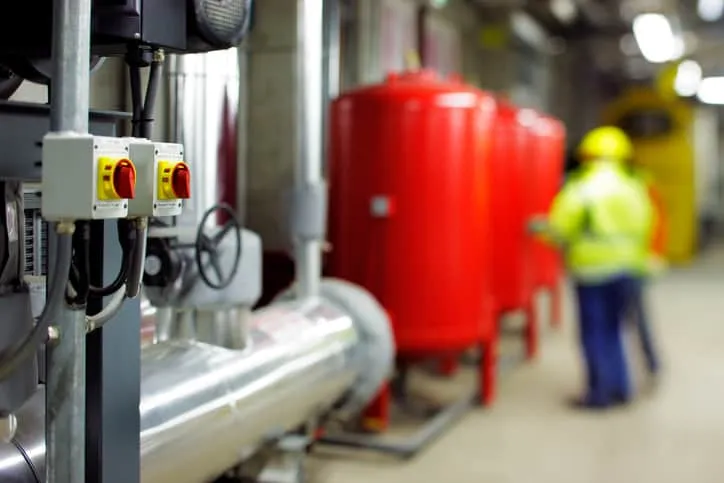Back in 2014 the ASTM (an international industrial standards body) announced the approval of a new renewable heating oil standard: ASTM D396. This was to be a clean heating oil with 20% renewable content and low sulfur overall. Poor quality heating oil that is high in sulfur is a health hazard, contributing to hot spots of childhood asthma in such places as New York City, where heating oil is widely used.
Timothy D. Wetzel is a voting member on ASTM fuel committees, and had voted to approve the new D396 standard. At the time, Tim stated, “I’ve voted on parts of this standard on my ASTM fuel committees. The fact is this: until now there was no specification or standard that was accepted by engineers of furnace manufacturers to burn a blend of biodiesel and heating oil. Therefore, there was no market for a blended heating oil product. Now with a B20 blend 80% of the fuel is ASTM 396 and 20% a biofuel! Huge. This big blend will have market acceptance and sell like beer from a 7/11 on a summer’s day!!”
What happened to ASTM D396? Well, apparently very little. If you search the Internet today on the term, you find hardly any results.
The former National Biodiesel Board (NBB) that was promoting “Bioheat” – the proposed, renewable heating oil – has rebranded itself as the Clean Fuels Alliance America (CFAA) promoting three kinds of fuel:
- Biodiesel
- Renewable Biodiesel
- Sustainable Aviation Fuel (SAF)
The focus on clean home heating oil has been lost.
NEW HEATING OIL REGULATIONS
In recent years, Northeastern states have been legislating the blending of 5% to 20% of biofuel into heating oil. Note that this does not have the same effect as the D396 standard, which was to dramatically reduce sulfur throughout the entire volume of the fuel. A Connecticut law coming into effect on 7/1/2022 requires heating oil to be blended with 5% of biodiesel. Biodiesel (ASTM D6751) was intended for transportation. Connecticut uses nearly 300,000,000 gallons of heating oil per year. One biodiesel producer is located in Connecticut, making 40,000,000 gallons per year out of used cooking oil, representing 13% of the state’s heating oil market.
By 2035, the biodiesel blending requirement goes to 50% and state regulators would like to ultimately eliminate imported petroleum entirely. How might that be done? Well, not with used cooking oil (UCO). The supply of UCO necessarily fluctuates with the volume of food consumed and oil collected. Are Connecticut residents expected to eat out at restaurants 8 times more than they do now? There’s no reason to expect that. The difference will have to be made up by purchasing seed oils (corn, soy, canola) – setting up a food versus fuel competition – or new technology.
THE POLITICS OF HEAT IN NEW ENGLAND
New England is a hotbed of competition among home heating technologies. The contestants are:
- Petroleum Heating Oil – The traditional favorite, but in 2022 petroleum has become expensive and shortages loom in the coming 2022/23 winter. Environmental activists hate this fuel and have been agitating to replace it. Some states have mandated that heating oil be blended with biodiesel. In the long term, these regulators plan to move completely off of petroleum onto bio-based fuels, but the supply does not exist today and it is not obvious where it might come from.
- Natural Gas – Natural gas burns more cleanly than heating oil, but it is still a fossil fuel. The availability of natural gas depends on bringing pipelines into counties where they have not reached before, and this is the point of attack by activists opposing any form of fossil fuel: opposing new pipelines. The industry has responded by promoting “RNG” – renewable natural gas. RNG can be created, for example, by capturing methane from dairy herds or landfills. But these sources of supply are always going to be very limited versus the demand.
- Propane – Propane is a compromise between heating oil and natural gas, putting out a level of carbon in between the two. It does not depend on an infrastructure of pipelines, but rather like heating oil the homeowner will possess a propane tank and need to arrange for delivery. Again, this is a fossil fuel, which regulators want to ultimately terminate.
- Wood – Heating by wood (cord or pellets) has been rebranded as “Advanced Wood Heat“. New wood appliances burn the wood more completely with less smoke. While it obviously still puts pollutants into the air, the source material is at least obtained locally and replaces imported foreign oil. It is also usually the lowest cost option in heating a home.
- Electricity – Electricity is probably the favorite home heating option of regulators and climate activists. There would be no pollution at the point of use in the home. The creation of the electricity at the source by the power company might come from a variety of sources, including coal, but at least pollution can be regulated and mitigated at that one point – rather than in every home. Some climate activists, surprisingly, are even warming up to the idea of nuclear power as a source of electricity that avoids emissions to the air. See: “Why I changed my mind about California’s Diablo Canyon nuclear plant” by Diane Feinstein.
Vermont Gas Systems has been fighting critics as it attempts to enlarge its pipeline network and acquire new customers from the heating oil base. The company has committed to adding sources of RNG to its system, but in the near term, that’s only going to amount to 2% of its total supply.
The Governor of Vermont recently vetoed a proposed Clean Heat Standard, and the legislature narrowly upheld the veto. Under the Clean Heat Standard, fossil fuel suppliers would have been mandated to reduce the pollution in the products they sell and to pay for energy efficiency improvements to their clients’ homes and buildings. This would obviously raise the cost of heating oil, natural gas, and propane at a time when market forces have driven up costs already.
The home heating battle has gone a different way in New Hampshire, where a law was passed that preserves the right of homeowners to decide how to heat their homes, banning municipalities from restricting home heating technologies.
THE PROBLEM OF LAND USE
We recently wrote about the food versus fuel competition – driving up the cost of both – created by the drive to make more biodiesel from seed oils. A problem we hadn’t considered is the effect on land use – the drive to bring more land under cultivation, reducing land for wildlife, recreation, or other uses. The Brookings Institution recently pointed out in a study that renewable energy technologies – such as, wind and solar farms – require greater land than fossil fuel production and run up against local opposition.
Furthermore, if you do the math about the land required to completely replace fossil fuels with seed farms, solar farms, wind farms, and algae pools, you’ll come up with an impossible amount of required land. Remember also that farming itself requires energy and feedstocks and fuels must be transported between farms and end markets.
Forbes has written about the failed Energiewende (energy turn) in Germany, which promoted renewable energy at all costs, but led to numerous dislocations; especially, the destruction of wildlife and impact on landscapes – and this was even before the crisis of the Russia-Ukraine War.
NON-POLLUTING FOSSIL FUELS
Inventor Timothy D. Wetzel has a solution to these failed green industries, which is an affordable, bio-available chemical additive that neutralizes pollutants (sulfur, NOx, etc.) in petroleum based fuels and causes the fuels to burn more completely. Much of the black smoke you see coming out of diesel trucks is unburnt fuel. Furthermore, at Vegas Renewable Diesel Inc., we have technology to make this same clean diesel fuel out of waste oils, such as used motor oil. Learn more about our technology at:







